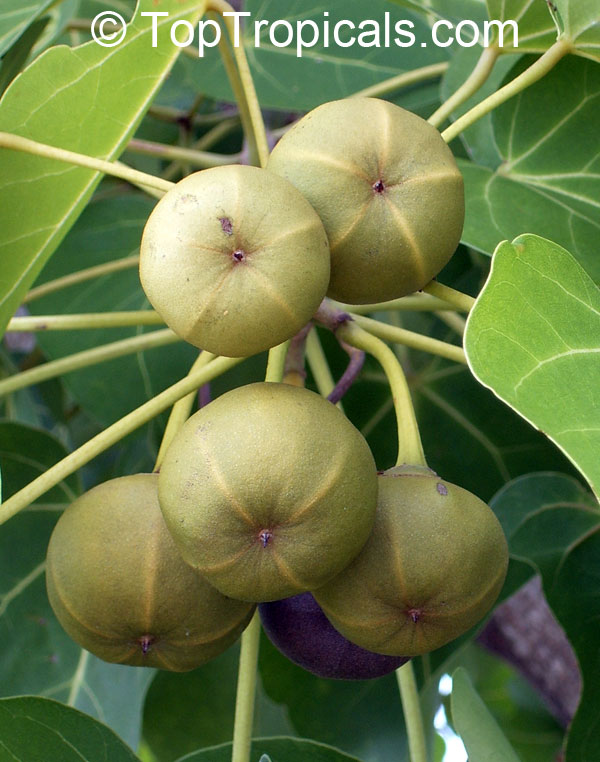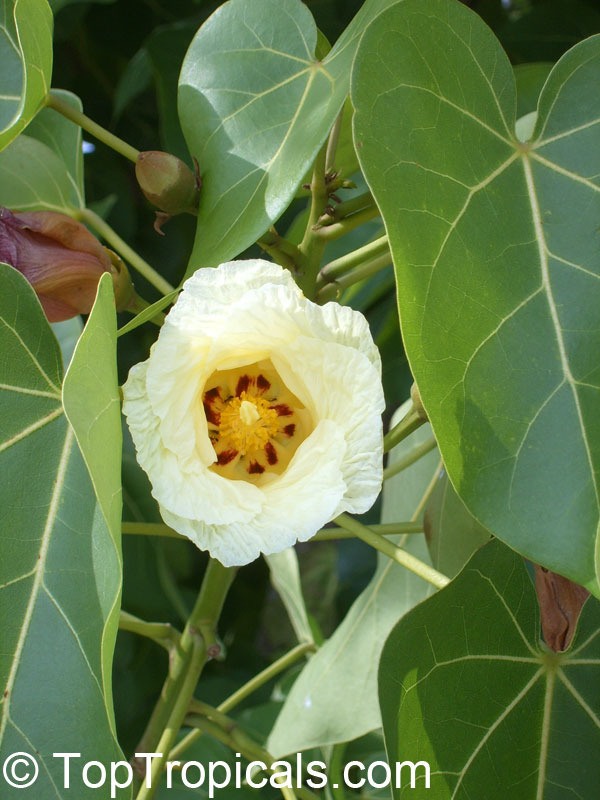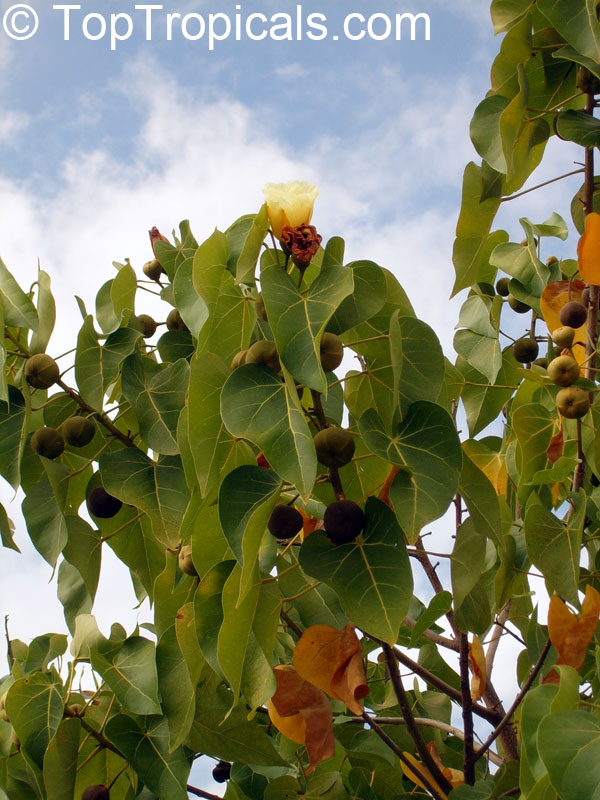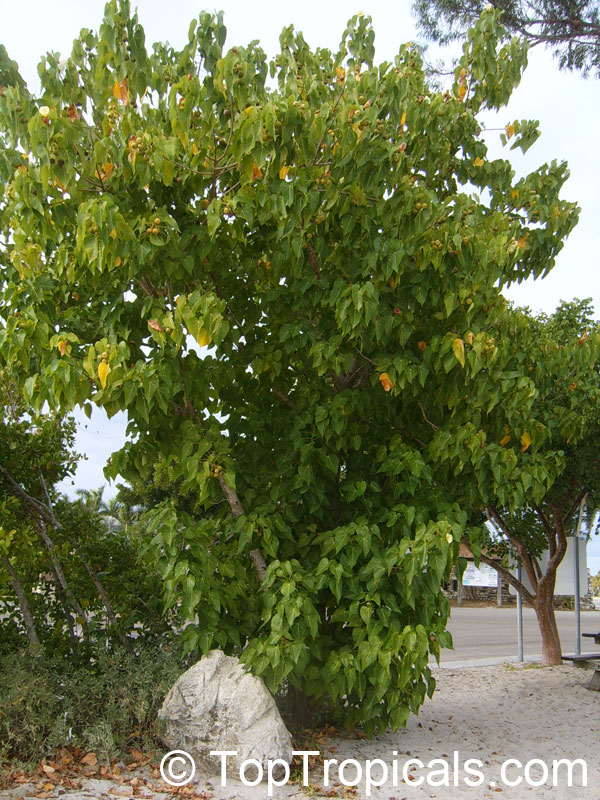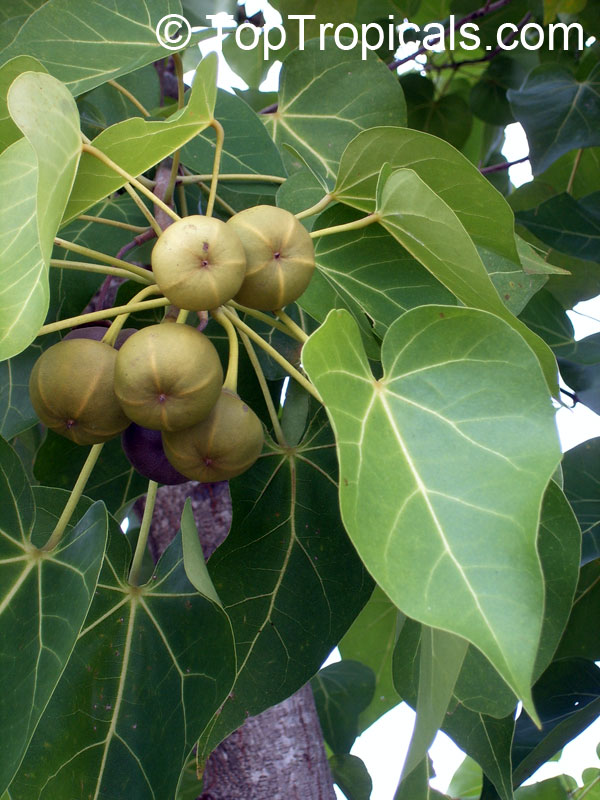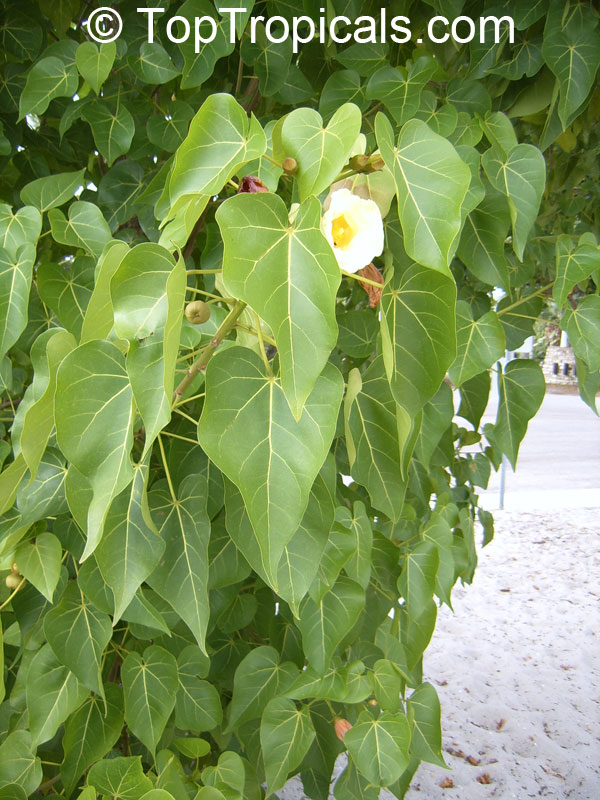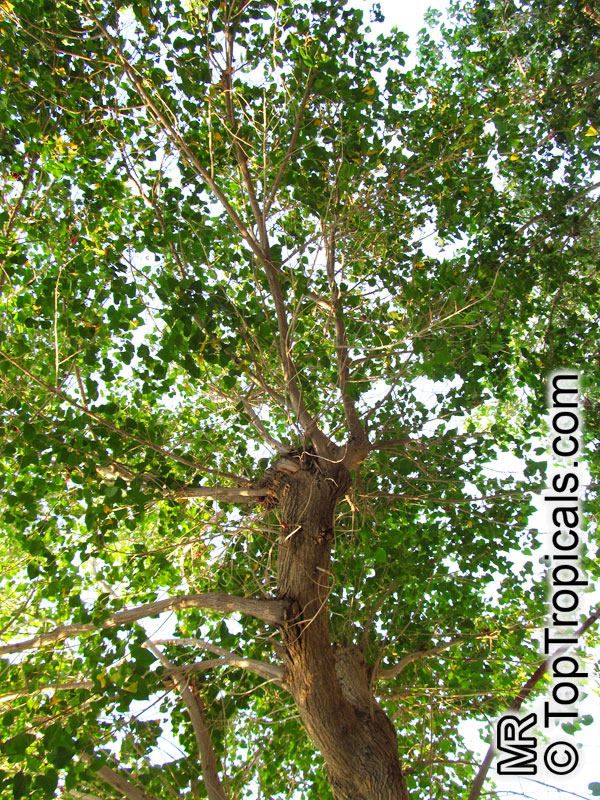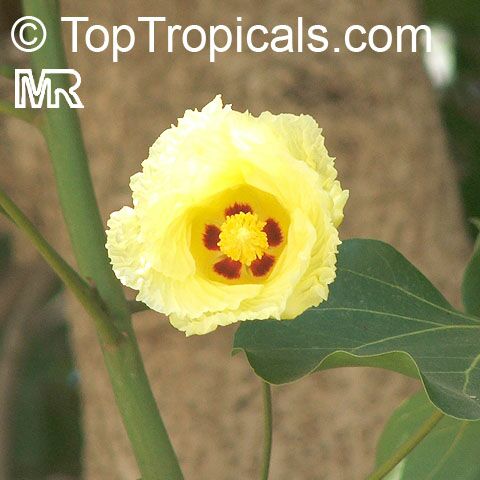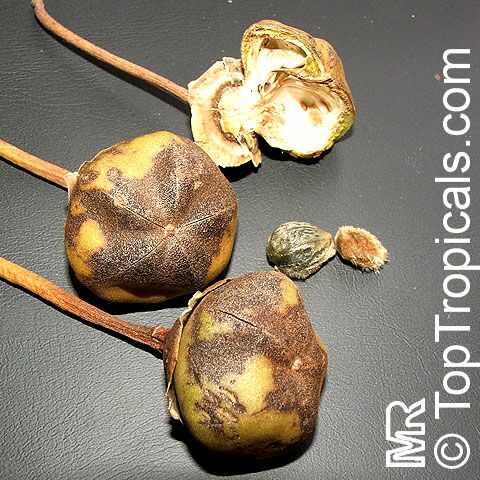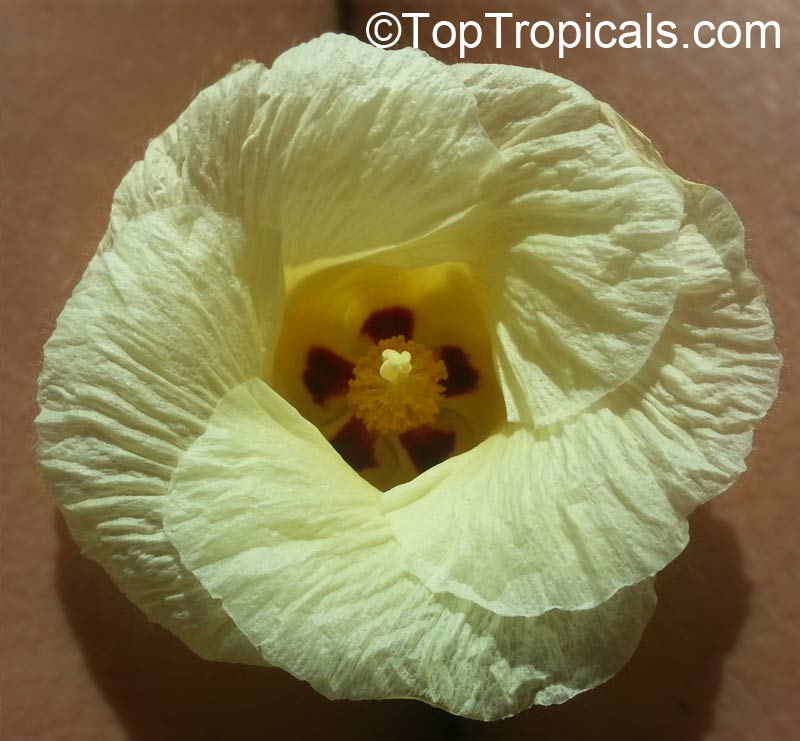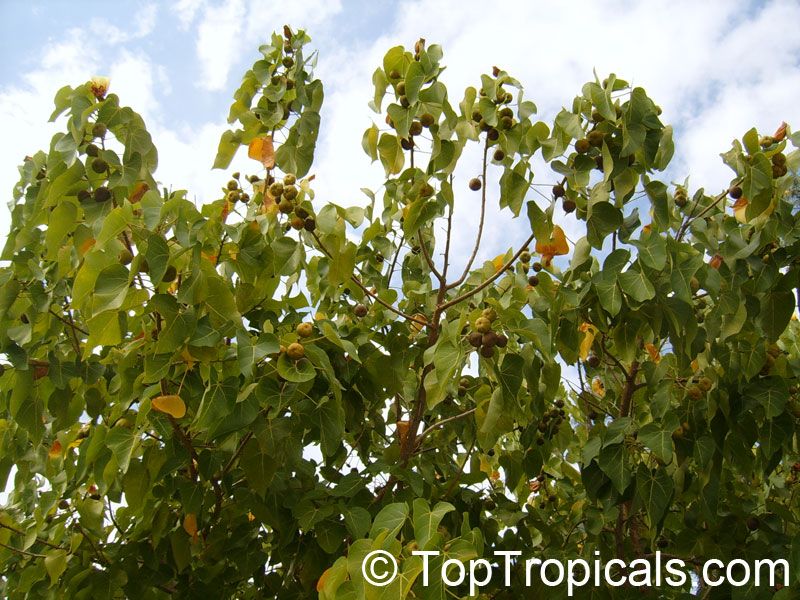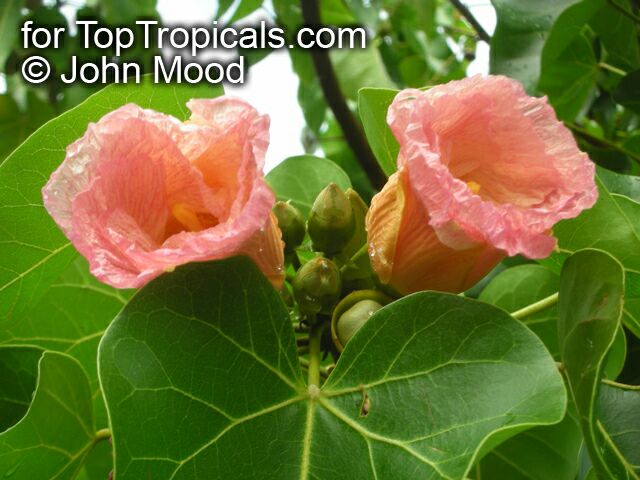Thespesia populnea, Hibiscus populneus
Seaside Mahoe, Portia Tree, MiloFamily: Malvaceae
Origin: India







Known as Milo in Hawaii, the Thespesia populnea (Seaside Mahoe) is often planted in front of Buddhist Temples. Originally from the Old World, this fast-growing species was brought to Hawaii by early Polynesian settlers and was considered sacred. It is a hardy shrub that grows into a small tree with dark-red wood, spreading branches and an attractive grain. The fruits, flowers, young leaves and timber are all edible, with the latter famously used to create wooden food bowls and utensils, and it has a range of traditional medicinal uses.
Tannin, oil and a dark red resin exude from its bark and its showy red, crimson, vinous and yellow-orange flowers attract butterflies and hummingbirds. This tree is an excellent feature in gardens because of its resistance to salt and termite damage, as well as its ability to cast welcome shade. It is well suited to seaside locations and can be successfully grown in USDA Zones 9-11.
Plant Thespesia populnea in full sun and a location where it can receive regular water in well-drained soil. Fertilize it twice a month with a balanced fertilizer for optimum results and insure it is adequately protected in colder climates. Make sure the pot has ample drainage and lightweight soil mix and that a frost-resistant insulation barrier is used.
Similar plants:
- Thespesia acutiloba, Thespesia populnea var. acutiloba (Small-leaved Tulip-tree )
- Thespesia grandiflora, Montezuma speciocissima (Maga)
- Thespesia Portica Asiatica (Asian Portoe, Dwarf Asian Portia, Sea Hibiscus)
- Abelmoschus esculentus, Hibiscus esculentus (Okra, Bamia, Gombo)
- Abelmoschus moschatus, Hibiscus abelmoschus (Musk Mallow)
- Alyogyne hakeifolia, Hibiscus hakeifolius, Cienfuegosia hakeifolia, Fugosia hakeifolia, Alyogyne lilacina (Red-centred Hibiscus, Desert Rose)
- Alyogyne huegelii, Hibiscus geranifolius (Blue Hibiscus)
- Hibiscus acetosella (African Rosemallow, Maple Sugar, Red Hibiscus, Cranberry Shield)
- Hibiscus arnottianus (Hawaiian White Hibiscus, Hau hele, O'ahu White Hibiscus)
- Hibiscus Aurora (Hibiscus Aurora)
